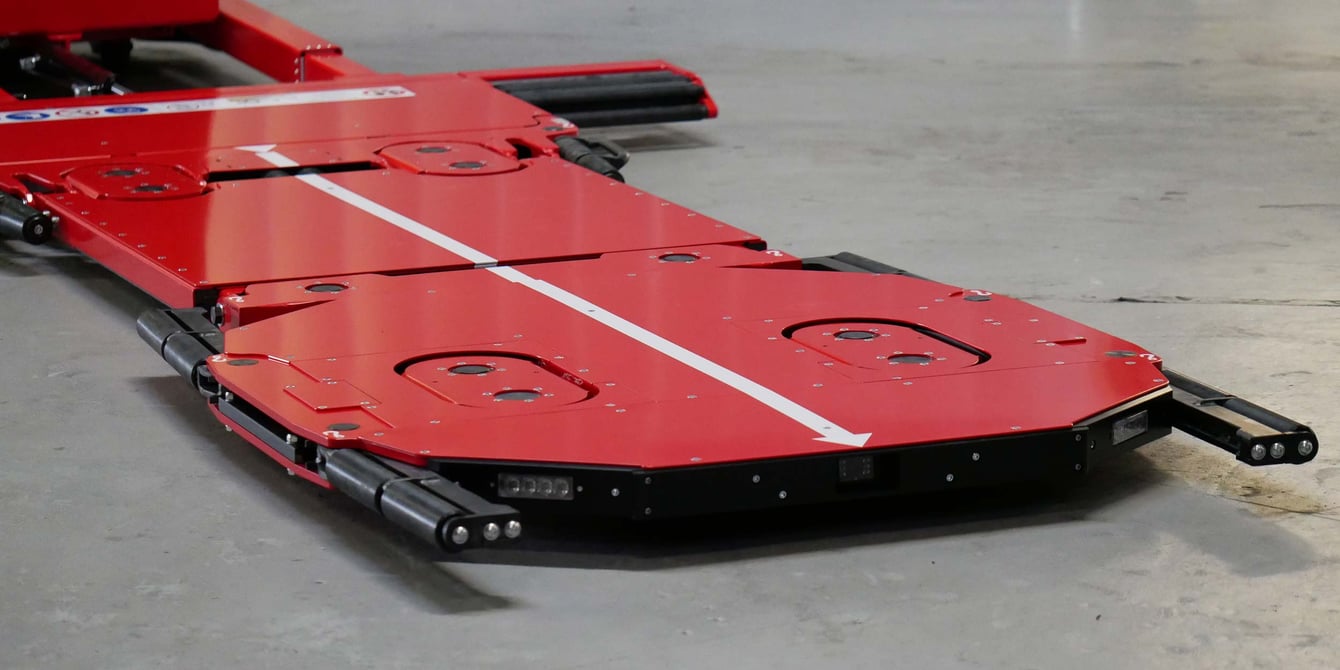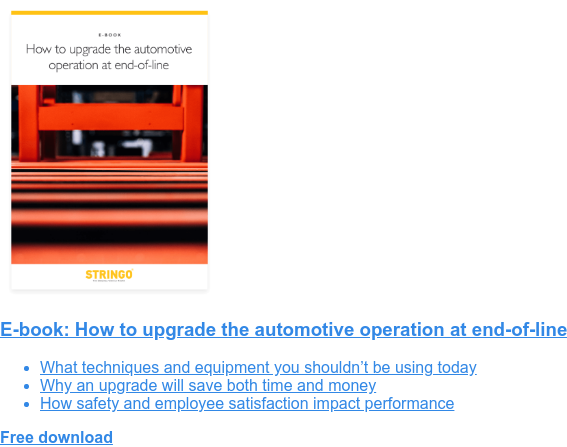As car manufacturing continues its shift from ICE to EV production, and vehicles overall become increasingly high-tech, what does this mean for automotive testing? Find out how manufacturers and third-party testing centres are upgrading their facilities to accommodate new demands and challenges—not least when it comes to EV testing safety.
Stringo’s National Sales Specialist for the US, Steve Terrell, and CTO Magnus Grafström, share examples and insights on how industry players are adapting to a new electrified automotive landscape.
1. Upgrading testing facilities and equipment
As the shift from ICE to EV production progresses rapidly, automotive testing needs to change to keep up with new demands:
“Traditional manufacturers going from ICE to EV production may still be using the same dynamometers and testing cells, at least initially,” says Steve Terrell. “To adapt, they bring in new equipment that supports the changing testing process. But we also see companies investing in completely new dynos to better match the specific requirements of EVs.”
One example is in-wheel motor EVs, where each individual wheel has its own separate drive motor:
“In these cases, testing can be done without utilizing the classic rollers.”
2. Increasing need to move cars with all wheels locked
It’s not just the actual dynos or testing cells that are affected by the EV shift. A major difference between testing ICE cars and EVs has to do with getting the vehicles safely into the testing area:
“In a testing scenario, you don’t want to start the vehicle’s engine when moving it through the facility. With an ICE car, you can tow it with the wheels free-rolling, but that’s not an option for EVs, since the wheels are locked when the engine is turned off. In these situations, you need equipment that enables four-wheel-moving, which is something we’ve seen a rising demand for in recent years,” Terrell explains.
3. ADAS requires higher placement accuracy
In addition to the EV shift, another industry development is creating new challenges for vehicle testing: advanced driver-assistance systems (ADAS). Increasingly, both ICE and electric vehicles are equipped with technology-based safety add-ons, such as sensors and cameras that enable guided cruise control and braking assistance. These systems need to be calibrated with great precision and then re-calibrated if a car has been involved in a collision. How does this affect the testing process?
“To get the calibration right, the testing conditions need to match highly specific parameters, for example when it comes to the placement of the cameras or making sure the ground is at an exact level. Driving or manually pushing a car into place with that level of precision is both difficult and time-consuming. With an electric vehicle mover, it’s a lot quicker,” says Terrell.
4. Electric tools speed up the testing process
Speed is also crucial for maintaining the right testing parameters over time:
“When a vehicle is tested at a specific temperature or air pressure level, you don’t want the door to the testing area to be open longer than necessary, since that means wasting valuable time just to get the parameters back to where you want them. Especially for third-party testing centres, there’s a very clear ROI for upgrading to an electric vehicle mover. The faster you can get a car in the right position for the test and then out again, the more tests you’ll be able to do during a shift,” Terrell explains.
5. New solutions to tackle EV testing safety hazards
Safety is one of the most challenging factors for the automotive industry when it comes to EV testing. The main hazard at this stage is battery overheating, which can cause fires, or in a worst-case scenario, thermal runaway – a chain reaction where a lithium-ion cell enters an uncontrollable, self-heating state.
To prevent this from happening, the batteries need to be closely monitored during the entire testing process. If there’s any unexpected change in the properties of the battery, the vehicle needs to be removed from the facility as a precautionary measure to limit the spread in case of a fire.
Magnus Grafström, CTO of Stringo, explains:
“Getting vehicles out quickly and safely is a challenge facing all EV manufacturers. When our customers contact us for help in this area, the main things they ask for are solutions for moving cars with all wheels locked and being able to do so remotely, with a minimum of human interaction.”
This changes the role of Stringo’s product,” says Grafström.
“Initially, our automotive manufacturing customers used our machines mainly to get non-starters off the end of line. But with the new challenges of EV testing, our machines are becoming a crucial component in keeping their staff safe.”
Continuous product development to meet industry demands
Stringo’s R&D team is constantly working to cater to the changing needs of the automotive industry. Four-wheel-moving solutions have been available to Stringo customers since 2016, says Grafström, but initially as a custom-made tool for one particular client. The entire industry has changed a lot since then:
“Our very first four-wheel moving model was created for a company that tested their vehicles at extreme temperatures. In these conditions, a car could end up with damages that were so severe that you couldn’t get it out of the testing cell by rolling it. You had to load the entire car onto the vehicle mover. Back then, this specific challenge wasn’t connected to electrification, but with the rapid rise of EVs, the demand is becoming much more widespread. So eventually, we decided to make four-wheel movers part of our standard product range,” Grafström concludes.
Upgrading your operational process will save you time and money while improving employee satisfaction. Download our e-book to learn more about the options available:






